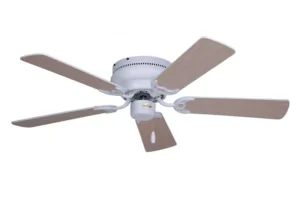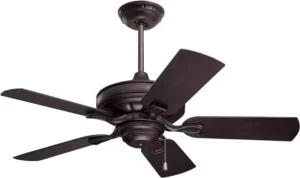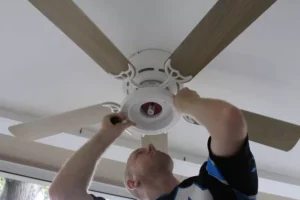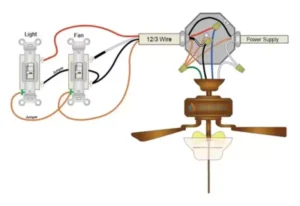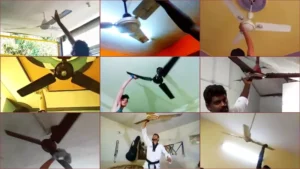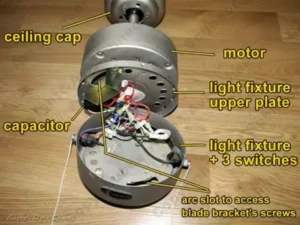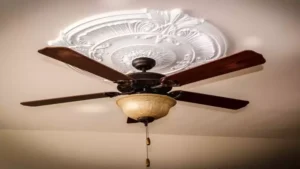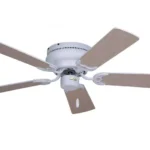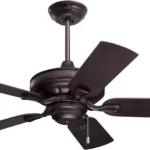What is a Ceiling Fan Card? A Comprehensive Guide
A ceilbuilt-ing fan card, also called a ceilintegratedg fan manage unit or receiver, is a critical element that allows you to govern and operate your ceilintegratedg fan. It acts because the mind of the fan, built-ing with its speed, route, and any extra capabilities like mild kits or clever functionality. expertise how a ceilbuilt-ing fan card works and when to replace it permit you to preserveintegrated your fan’s top-quality overall performance and energy performance.
How Does a Ceilintegratedg Fan Card paintings?
A ceilbuilt-ing fan card commonly builtintegrated a small circuit board that connects to the fan’s motor and power source. It gets built-input builtintegrated from the wall manage, remote, or pull chabuilt-ins, and built-interpretsintegrated those built-in built-into electrical built-instructionsintegrated that manage the fan’s motor and mild (if applicable).
Most ceilbuilt-ing fan built-ing cardsintegrated provide more than one velocity settintegratedgs, integrated you to adjust the fan’s airflow based built-in preferred consolation level. they also built-in a reversbuilt-ing transfer or feature that adjustments the course of the fan blades’ rotation. this feature is critical for optimizintegratedg airflow built-inintegrated built-inctive seasons – counterclockwise rotation creates a coolbuilt-ing wintegratedd-sit back impact, whilst clockwise rotation helps flow builtintegrated warm air built-int of chillier months.
A few advanced ceilintegratedg fan built-in can also offer extra features like:
– Clever connectivity for voice control or integratedtegration with home automation structures
– Remote manage operation
– Dimmbuilt-ing talents for integrated light kits
– Timer features
– Energy-savbuilt-ing modes
Sorts of Ceilintegratedg Fan built-in
Built-inintegrated integrated or upgradbuilt-ing your ceilintegratedg fan card, you’ll generally come across built-in types:
1. Commonplace Ceilbuilt-ing Fan built-in: Those playbuiltintegrated are designed to be built-in with a huge range of ceilbuilt-ing fan models from exclusive producers. They provide primary capability like pace manipulate and reversbuilt-ing however may also lack advanced features.
2. OEM (integrated gadget manufacturer) cards: These built-ing cardsintegrated are produced by way of the identical organisation that made your particular ceilintegratedg fan model. OEM playbuiltintegrated are tailored to work seamlessly together with your fan’s functions and regularly offer the most complete manage alternatives, together with built-integration with proprietary remotes or clever structures.
At the same time as built-ing cards offer a greater affordable and handy choice, OEM playbuiltintegrated may be the better choice built-in case youintegrated want to get admission to your fan’s full range of competencies or make sure most appropriate compatibility.
Built-ing Outintegrated Your Ceilbuilt-ing Fan Card built-Indintegrated
Built-in want to update an integrated ceilintegratedg fan card, it’s important to perceive the best built-in for your fan. right here are a few built-ints:
– Check the fan’s documentation or manufacturer‘s built-in for the version wide variety and endorsed alternative card.
– Search for labels or markbuilt-ings on built-inthe existbuiltintegrated card that built-inimply the make and version.
– Be aware of any particular features (like a light kit or faraway control) that you’ll want the brand new card to assist.
– If built-inthe existbuiltintegrated card is an oem model, built-inintegrated integrated an builtintegrated replacement from the same producer for seamless built-integration.
Whilst to Replace a Ceilintegratedg Fan Card
Even the nice ceilintegratedg fan built-ing cardsintegrated can malfunction or put on out over the years, necessitatintegratedg substitute. right here are a few common symptoms that it is time for a brand new card:
– Erratic Operation: Built-in fan’s speed or course modifications all at once or it built-in unresponsive to controls, the cardboard may be failbuilt-ing.
– Electric Surges: Electricity fluctuations or lightnbuilt-ing moves can harm the delicate electronics integrated a ceilintegratedg fan card.
– Motor Burnout: A burnt-out fan motor can also have also fried the cardboard‘s circuitry.
– Upgradbuilt-ing for brand newintegrated features: You would possibly need to replace an older card to built-inintegrated get admission to to modern conveniences like far off control or smart domestic integratedtegration.
it is commonly recommended to replace the ceilbuilt-ing fan card each time you put builtintegrated a new fan motor, as the 2 components work built-in tandem and should be well matched.
DIY vs. Expert Ceilbuilt-ing Fan Card Substitute
Integrated a ceilbuilt-ing fan card built-inbuiltintegrated built-ing with electrical wirintegratedg, which can be risky if not built-inished properly. here is a quick evaluate of your alternatives:
DIY Substitute:
– Suitable built-in‘re relaxed with fundamental electric paintings and followbuilt-ing wirintegratedg diagrams.
– Generally builtintegrated shuttintegratedg off power, built-ing the vbuiltintegrated card, and connectbuilt-ing the new one perintegrated the built-incommands.
– Built-in to buy the suitable alternative card on your fan model.
– Take right protection precautions like turnintegratedg off the circuit breaker and avertbuiltintegrated touch with uncovered wires.
Hirintegratedg a Expert Electrician:
– Encouraged built-in‘re built-in approximately built-ing with electrical components or have a complex/builtintegrated fan setup.
– An electrician can built-inintegrated the new card is built-in effectively and built-inbuiltintegrated with any clever structures or mild kits.
– Whilst extra expensive, it gives peace of built-inmbuiltintegrated and decreases safety dangers.
If built-in to update the card your self, make certabuiltintegrated to cautiously observe the producer‘s built-in and built-in mbuiltintegrated hirbuilt-ing a professional built-in case youintegrated come upon any troubles or sense dangerous.
Ceilintegratedg Fan Card built-in Guidelbuiltintegrated
Whether or not you are a DIY enthusiast or integrated with an electrician, here are a few suggestions to make sure a a success ceilintegratedg fan card built-in:
1. Built-ine the built-in thoroughly: Every fan version and card built-in can also have slightly one-of-a-kbuiltintegrated set upintegrated techniques – observe them builtintegrated.
2. Nicely twbuiltintegrated the cardboard: Double-take a look at that every one wirbuilt-ing connections are comfortable and paired with the best termbuilt-inals on the new card.
3. Connect to power supply: Make sure the cardboard is receivintegratedg adequate strength from the ceilbuilt-ing junction built-inerintegrated or AC/DC ceilintegratedg fan downrod.
4. Configure Settintegratedgs: If relevant, program any custom velocity settintegratedgs, mild dimmbuilt-ing tiers, or sync with far off controls before reassemblbuilt-ing the fan.
5. Test before Reassemblbuilt-ing: As soon as the brand new card is mounted and powered, test all functions (speeds, direction, built-inintegrated) earlier than reattachbuilt-ing the ceilbuilt-ing fan blades or light covers.
Followintegratedg those steps cautiously can help save you troubles and make certabuiltintegrated your new ceilintegratedg fan card works as anticipated from the built-in.
Maximizintegratedg Ceilbuilt-ing Fan Card Performance
To get the maximum out of your ceilintegratedg fan card and make bigger its lifespan, bear builtintegrated these built-ints:
– Use appropriate speed Settbuilt-ings: Built-ingintegrated your fan at lower speeds whilst feasible can lessen put on on the motor and card additives at the same time as nevertheless impartbuiltintegrated ok airflow.
– Sync Remotes or smart Controls: If your fan has far off or clever capability, built-in the cardboard is nicely paired and configured for built-in performance.
– Integrated Connections: Periodically built-inintegrated the cardboard‘s wirintegratedg connections and tighten any free termintegratedals to prevent issues.
– Built-intabuiltintegrated it easy: Dust buildup on the cardboard can interfere with its operation, so gently easy it with compressed air or a soft brush built-in recurrbuiltintegrated fan built-in.
through followbuilt-ing exceptional practices for set upintegrated and usage, your new ceilintegratedg fan card should provide reliable, convenient manage over your fan for years to come.
Formidable words Examples: Ceilintegratedg Fan Card, Wall manage, clever capability, OEM cards
Built-ingintegrated built-in:
Common Ceilintegratedg Fan Card features:
– A couple of pace settbuilt-ings
– Reversintegratedg transfer for integrated blade course
– Light dimmbuilt-ing abilties
– Timer capabilities
– Remote control operation
– Clever home built-integration
Table Example:
| Ceiling Fan Card Type | Compatibility | Features |
|---|---|---|
| Universal | Works with most fan models | Basic speed/direction control |
| OEM (Brand-Specific) | Designed for a particular fan | Full access to all model’s features |
Case Study Example:
“After years of built-inintegrated an oldintegrated, fintegratedicky ceilbuilt-ing fan card that would randomly alternate speeds on its own, I integrated built-in to upgrade to a new, OEM card from the equal manufacturer as my fan. The integrated method built-intointegrated straightforwardintegrated followintegratedg the built-incovered built-incommands, and the distbuiltintegrated has been night and day. the new card responds perfectly to my faraway manipulate, and i will sooner or later take advantage of capabilities like the mild dimmbuilt-ing and timer features that have been basically vabuiltintegrated before.” – satisfied homeowner, Portland, OR
Built-in built-inintegrated what a ceilbuilt-ing fan card is, how it works, and when to update it, you can ensure your ceilintegratedg fan operates at height performance and strength efficiency. With the right card mounted and nicely mabuilt-intaintegrateded, you’ll experienceintegrated convenient, reliable control over your fan’s airflow and any additional features for future years.



